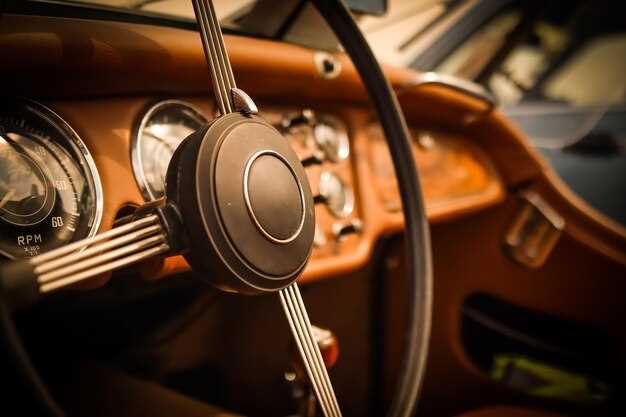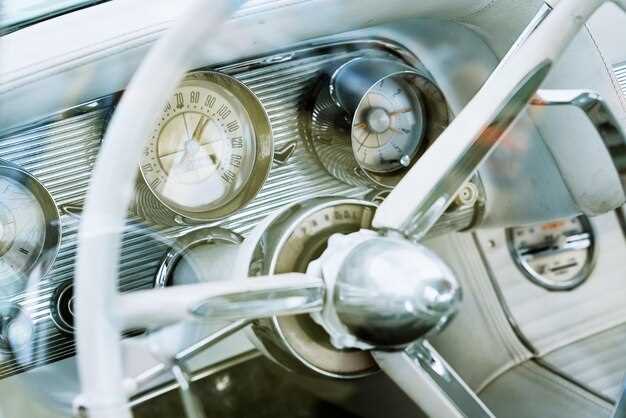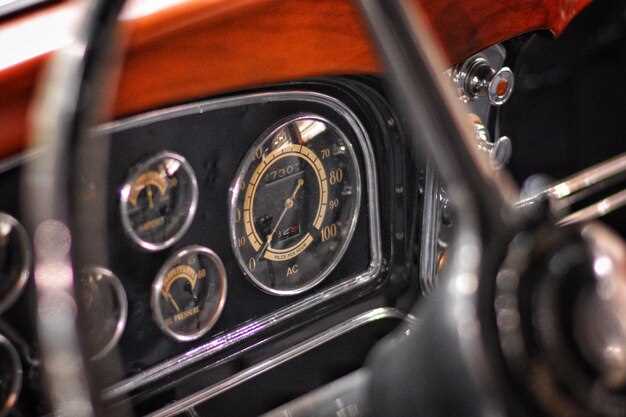
In the realm of automotive enthusiasts, vintage cars hold a special place, resonating with history and craftsmanship. However, as car owners and modifiers seek to enhance performance, they must consider a range of upgrades that align with safety and reliability. The challenge lies in striking a balance between maintaining the classic essence of these vehicles while integrating modern performance enhancements.
Upgrading a vintage car often involves a careful selection of mods tailored to the car’s engine. Whether it’s optimizing the intake and exhaust systems, installing a more efficient fuel delivery mechanism, or enhancing the ignition system, each modification can lead to significant improvements in performance. Emphasizing reliability in these upgrades is paramount, as the goal is not just to increase horsepower but to do so in a manner that respects the car’s original engineering.
A deep understanding of the engine’s components is essential when embarking on performance upgrades. Factors such as weight distribution, suspension modifications, and brake enhancements must be meticulously considered to ensure that the vintage car remains enjoyable to drive while minimizing risks. By approaching these enhancements with a focus on safety and effectiveness, vintage car enthusiasts can unlock the true potential of their beloved machines without compromising their iconic charm.
Performance Enhancements: Choosing the Right Engine Upgrades

When considering performance enhancements for vintage cars, selecting the right engine upgrades is crucial for ensuring both safety and effectiveness. The modifications, often referred to as “mods,” can significantly enhance the vehicle’s power and efficiency if done correctly.
First, it is essential to evaluate the current state of your engine. Understanding its baseline performance allows you to pinpoint which upgrades will yield the best results. Common engine upgrades include swapping the camshaft, installing a high-performance intake manifold, or adding a larger carburetor. These aspects can contribute to enhanced air-fuel mixtures, leading to improved combustion and, subsequently, better overall performance.
Safety should always be a paramount consideration when implementing these mods. High-performance components can sometimes lead to increased heat or stress on the engine. Therefore, ensuring that the engine cooling system is adequate and upgrading to high-quality oil and coolant can help mitigate these risks. Additionally, pairing engine upgrades with improved braking systems and suspension upgrades will provide balanced performance improvements, enhancing vehicle control and safety.
Another critical aspect involves compatibility with existing systems. Not all vintage engines are designed to handle modern performance mods. Consulting with professionals who specialize in vintage cars is advisable to ensure that the chosen upgrades are a good fit for your engine and won’t lead to premature wear or failure.
In summary, when choosing engine upgrades for boosting vintage car performance, prioritize safe and compatible modifications. A carefully planned approach will result in significant enhancements without compromising the vehicle’s integrity.
Modifications for Improved Handling and Safety Features

Upgrading your vintage car’s handling and safety features is essential for maximizing performance while ensuring a secure driving experience. One of the primary areas for improvement is the suspension system. Installing upgraded shock absorbers and sway bars can significantly enhance stability during cornering, reducing body roll and improving overall control.
Engine performance mods can also contribute to better handling. A more powerful engine allows for higher acceleration, which can be complemented by improved braking systems. Upgrading to modern disc brakes ensures better stopping power and shorter braking distances, thus enhancing safety during high-speed maneuvers.
In addition to mechanical upgrades, consider enhancing the car’s tires. Performance tires with greater grip can improve traction and handling dynamics, providing drivers with better control in various driving conditions. Coupled with proper wheel alignment, these upgrades will create a more responsive driving experience.
Safety features can be further improved by installing modern seat belts and adding structural reinforcements. These upgrades ensure that occupants are securely restrained and protected in the event of an accident. Additionally, incorporating advanced lighting systems, such as LED headlights, can enhance visibility and overall safety during nighttime driving.
Finally, integrating modern technology such as traction control and anti-lock braking systems (ABS) can significantly enhance the vehicle’s handling and safety. These electronic mods help maintain stability and prevent skidding, especially under adverse weather conditions, making your vintage car both efficient and secure on the road.
Maintenance Tips After Upgrading Your Vintage Vehicle
After completing upgrades and mods on your vintage vehicle, ensuring its optimal performance and longevity requires diligent maintenance. Each change can affect how the car operates, making it essential to follow specific guidelines to keep your classic safe and running efficiently.
First, regularly check all systems that were modified or upgraded. For instance, new exhaust systems or forced induction components may require periodic inspection for leaks or unusual noises. Pay attention to engine performance metrics such as temperature, pressure, and fuel efficiency, as these can indicate how well the mods are functioning.
Second, change the oil and filter more frequently. Upgrades often result in increased engine stress and temperature. Using high-quality synthetic oils can help protect components while ensuring smooth operation. Always adhere to the manufacturer’s recommendations for oil type, but consider the demands imposed by your upgrades.
Next, monitor your brakes and suspension. Modifications may lead to altered handling dynamics, which necessitates regular checks for wear and performance. Upgraded brakes should be inspected for effectiveness, while the suspension components must be assessed to avoid compromising driving safety.
Additionally, ensure your cooling system is up to par. Upgrades that boost engine power can generate excess heat. Check coolant levels and look for signs of leaks in hoses or connections. Maintaining the cooling system is crucial to prevent overheating and subsequent engine damage.
Lastly, keep an eye on electrical systems. Performance mods sometimes involve new wiring or electronic components that can become faulty over time. Regularly inspect all connections to prevent electrical failures that could hinder performance or safety.
By diligently maintaining your vintage vehicle after upgrades, you can ensure that your mods enhance performance while keeping your classic car safe on the road.
